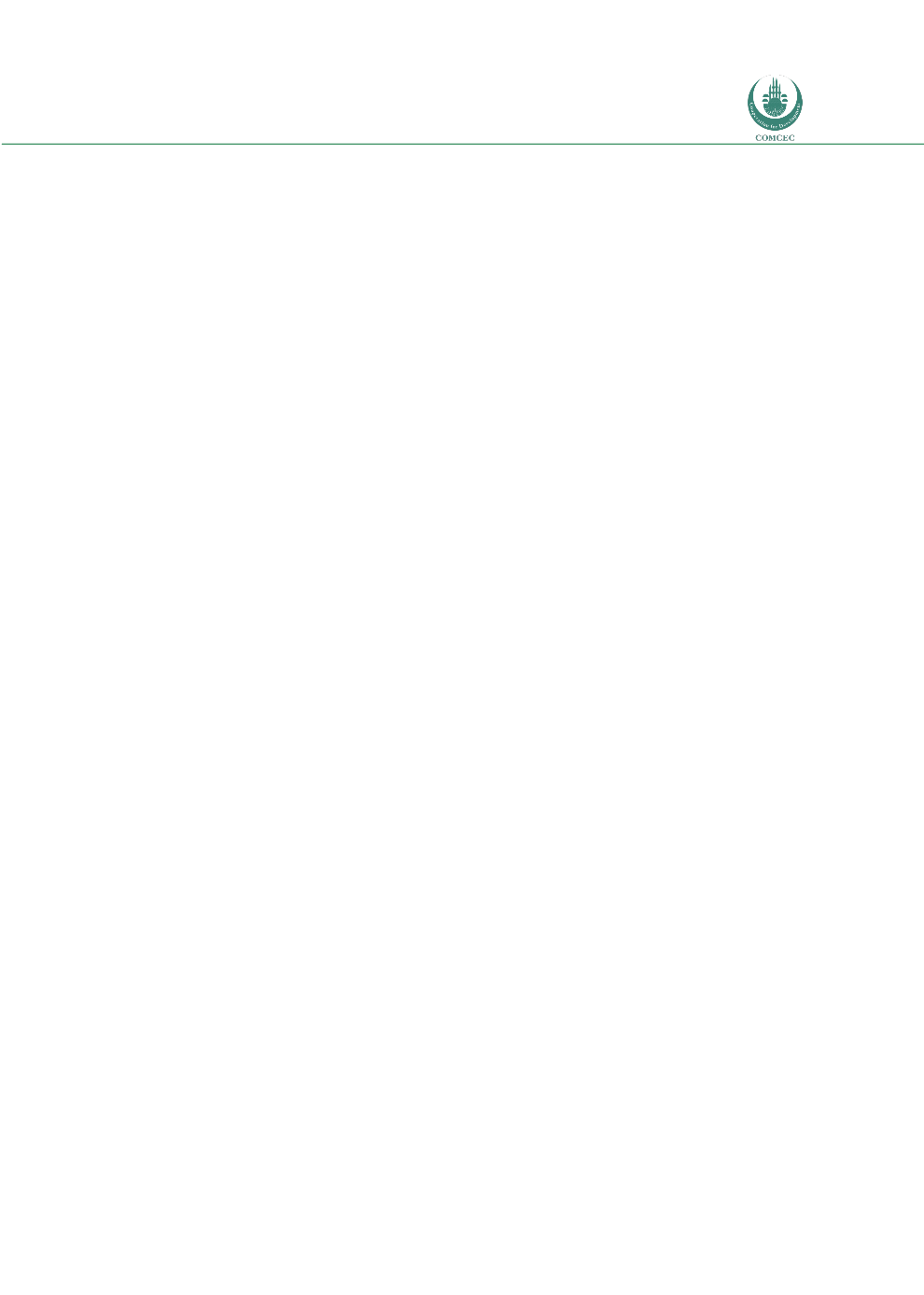

Risk Management in
Islamic Financial Instruments
129
with national Shariah standards or national Shariah boards. The number of countries adopting
international Shariah standards in their supervision framework can also be used. According to
an IFSB and IRTI survey, only 35% of the regulator respondents have established Shariah
governance standards. This percentage will need to increase to negate skepticism of Islamic
banks and their compliancy to Shariah (
A Mid-Term Review
30). A third indicator is the
deepness of corporate governance standards and the disclosure standards of Islamic financial
institutions (
A Mid-Term Review
106). Institutional reforms may be capable of enhancing
regulatory implementation and enforcement. Governance and Shariah compliancy may be
improved with the establishment of national Shariah boards, or documenting all fatwa related
to Islamic financial services (
A Mid-Term Review
122).
6.6 CAPITAL MOBILIZATION AMONG MUSLIM COUNTRIES
Capitalization in the Islamic finance industry is small, compared with the financial industry as
a whole. Few Islamic finance institutions are strongly capitalized and capable of expanding
outside of their home countries. In addition, Islamic banking institutions are perceived as less
efficient in acquiring capital, compared with conventional financial institutions. NBFIs fare
better in comparison. Recommendation 2 from the Ten-Year Framework calls for enhancing
the capitalization and efficiency of the IIFS. The IFSB standards attempt to “ensure that capital
adequacy regulations suit the risk exposure of Sharī`ah-compliant contracts, provide
adjustments required in the capital adequacy ratio (CAR) for profit-sharing investment
accounts, and offer eligibility criteria and the contractual structure for issuing capital
instruments that meet the criteria of going concern and gone concern capital (24).”
Progress in this area is measured using four indicators: 1) average capital adequacy, 2) the
average ROE of Islamic banks, 3) the average ROE of takaful companies, and 4) the market
capitalization of member country capital markets. Examples of the progress in improving
capital mobilization can be seen in the creation of the Tahawwut Master Agreement, the
Mubadalat al-Arbah (Islamic profit rate swap), the Islamic Interbank Unrestricted Master
Investment Wakalah Agreement, and the Master Agreement of Treasury Placement (
A Mid-
Term Review
99, 105). One of the twenty key initiatives in the
Mid-Term Review
is the number
of securities proposed to fund public infrastructure projects to build Islamic capital markets.
Long-dated sukuks would be used to finance infrastructure projects. Therefore, Sukuk returns
would be linked to infrastructure projects that can generate revenue. Using long-dated sukuks
would also allow the sukuks to be listed and traded on exchanges and be traded based on the
latest market prices (
A Mid-Term Review
126-127).
6.7 FINANCIAL INCLUSION AND ISLAMIC MICROFINANCE AMONG
MUSLIM COUNTRIES
Increasing financial inclusion is important, as it can reduce inequality and propagate economic
growth. Financial exclusion transpires in two categories: those who are involuntarily excluded
and those who voluntarily exclude themselves. The poor are more easily vulnerable to shocks
and do not have proper access to financial services, including savings, credit, and insurance
(Ahmed 203). Factors that result in financial exclusion of the poor include low income, high

















